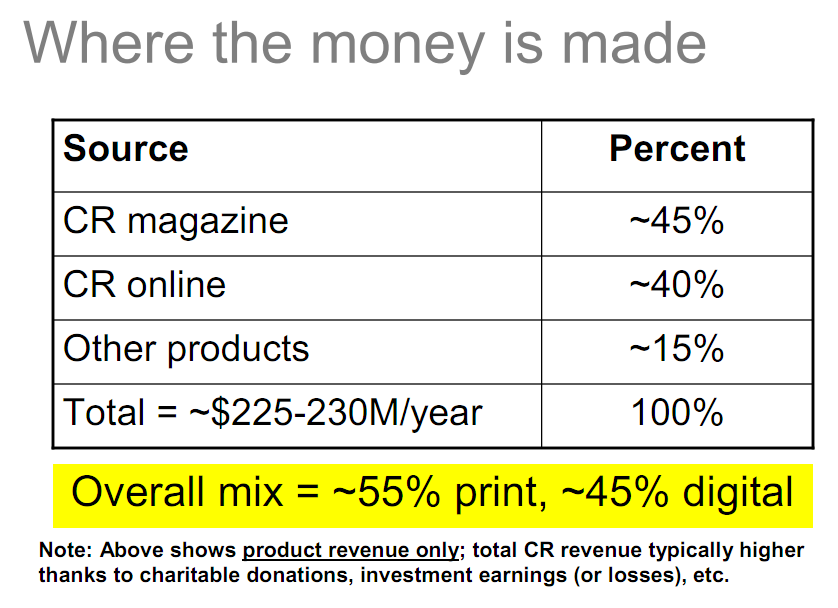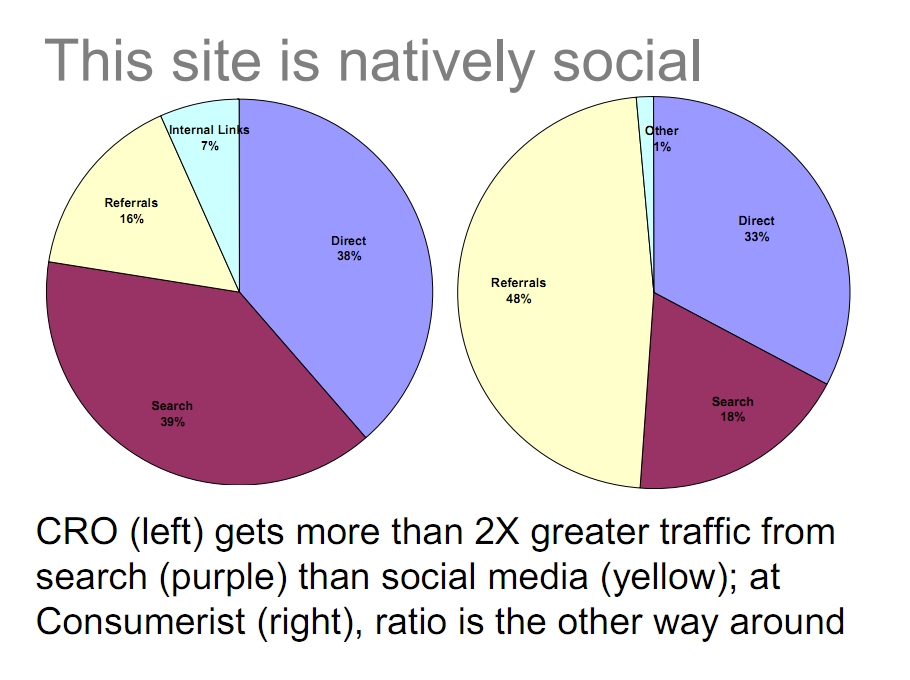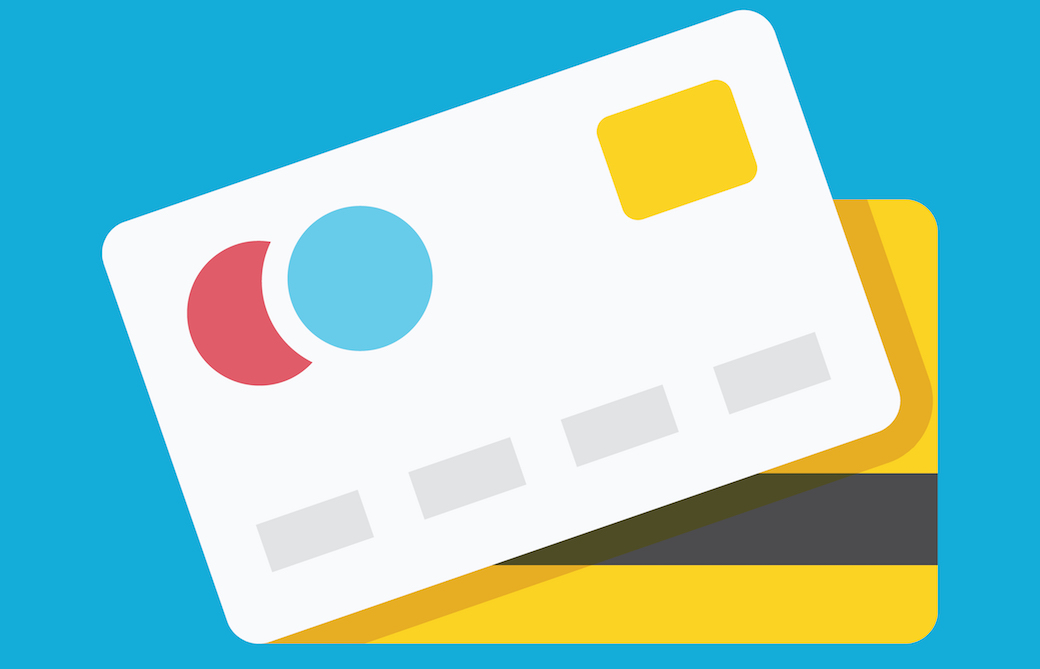Paywalls are a touchy topic for any media brand that sells advertising, but many publishers are reconsidering paid content ideas because of the challenging advertising environment. Metered paywalls have demonstrated that freemium strategies, when properly implemented, can achieve the audience scale needed for advertising while monetizing the most loyal of visitors through subscriptions.
Kevin McKean, VP and Editorial Director of Consumers Union (Consumer Reports), shared some of his experiences and insights with attendees of American Business Media’s Executive Forum (presentation slides available to members here). Since launching its hard paywall in 1998, Consumer Reports Online has grown to over 3.3 million paid subscribers and $90MM in revenue. McKean compared to that to the 4.4 million print subscribers who generate nearly $105 million in subscriptions. Looking around the room at that moment, I saw a lot of CEO’s lean forward in their seats.

Content strategy drives paywall revenue… not just marketing
With the attention-grabbing numbers available out of the way, McKean began to explain the nuances of Consumer Reports strategy to open up the hard paywall. He said, “[we] give away the content that helps you figure out how to buy, but the paid content is about specific products.” This strategy allows CR to leverage the power of Google and search engine optimization (SEO) without having to create new content. Someone who is thinking about making a large purchase can get comfortable with the terminology, technology, and feature set of the purchase without knowing which of the products best meets their needs. Once they are ready to go the next step, they can subscribe to the ConsumerReports.org for $26 a year or $5.95 a month, and print subscribers can upgrade their subscription for $19 a year.
Later on in the presentation, McKean shared with attendees why they offer subscriptions instead of one-off reports, saying, “iTunes is a terrible model for publishers. Microsales have the exact wrong effect on your audience by making them think every time they consume your content. This makes them ration their usage.” Once your content is created, your goal should be to maximize its use (high perceived benefit, little cost to you), and micropayments have just the opposite effect.
SEO vs. paid search: conversion rates for paywalls
Free content on ConsumerReports.org generates a .1% to .2% paywall conversion rate from organic search (unique visitors to paid subscribers). Comparing the approximately 6.1 million monthly unique users (according to Google Ad Planner) to the 3.3 million paid subscribers McKean stated the site had gives you a ballpark of their revenue potential of their organic efforts. Here’s the math from:
- High: 2.8 million uniques x .2% x $26 per year =$1.7 million
- Low: 2.8 million uniques x .1% x $5.95 for one month = $200k.
That’s a pretty big range, but against $90 million in existing online subscription revenues, neither is game-changing growth.
Paid search engine marketing (SEM), on the other hand, converts at closer to 1 to 2%, according to McKean, adding, “CR’s sales strategy would be a no-brainer between the two channels except that the cost-per-acquisition (CPA) of SEM currently exceeds first year revenues.” He later stated that the CPA for subscriptions via paid search was in the $20’s and alluded to the fact that rising cost-per-clicks in search might have made this less feasible than in the past.
Social media as a paywall
Perhaps being caught between the lack of scale in the organic SEO model and the lack of profit in the paid search marketplace, Consumers Union is experimenting outside of ConsumerReports.org. The Consumerist, a blog that Consumers Union bought, has approximately 3MM visitors per month with staff of 2 full-time and 3 part-time people. What’s remarkable about the blog is that 48% of The Consumerist’s referrals are from social while ConsumerReports.org’s social refferals are only half that of search. “This is the future,” said McKean, alluding to the viral power of social media on conversions.

Mobile: Are smartphones and tablets really the holy grail of paid content?
Consumer Reports started with a news reader in 2008 and added a shopping app with bar-code reader in 2010. Their apps started out at $9.99 for all content and moved down to $4.99. McKean said that Consumer Reports was rethinking its strategy here and moving towards slicing and dicing their content into $1.99 apps. In 2011, they added an iPad edition, utlizing Adobe’s Digital Publishing Suite. McKean said they plan on offering the iPad app free to all print subscribers and that CDS Global is powering their print/iPad app bundled subscriptions. They are also seeing approximately 1,000 app purchases a month through iTunes. McKean added that even a company with over a decade of experience in paid content is still learning the mobile game.
Digital renewals 75% higher than print
During Q&A, someone asked about renewal rates. (Great question, btw.) McKean said that digital had significantly better rates due to the fact that credit cards could auto-renew.
- Print renewal rates:
- First year: ~40% to 50%
- Second year: ~60%
- Third year: ~70% to 80%
- Fourth year or longer: ~85%
- Digtal renewals are already 70% in first year


